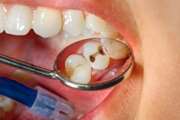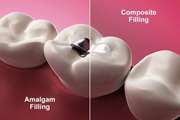World Cavity-Free Future Day
To prevent tooth decay, brush twice a day with fluoride toothpaste, reduce the amount and frequency of caries-causing sugary substances, and visit the dentist every six months for periodical examinations.
Choices for fixing cavities
Many adults grew up with “silver” fillings when they had a cavity. Although these fillings are still an option, there are now other choices, such as tooth-colored fillings and materials that release fluoride to help protect your teeth from developing new cavities. Each of these choices has its pros and cons, but most importantly, you and your dentist have choices available when repairing a cavity.
Silver-colored vs tooth-colored fillings
The chewing surfaces of your back teeth are more likely to develop cavities than other tooth surfaces. It is important that dentists remove the decay and fix these teeth as soon as possible to keep them strong. In fact, if the tooth is not treated, it can become so damaged that it needs to be removed. In many cases, dentists can fill the tooth with silver-colored or tooth-colored fillings depending on your needs, the size of the cavity, and the type of filling you would like.
Options for dealing with tooth decay
Not all tooth decay is created equal. Although some decay may require invasive drilling, in its early stages it may be addressed through less invasive means. In fact, there are a variety of minimally invasive interventions you and your dentist can use to tackle decay early.1 To help you partner with your dentist in this fight against decay, here is a rundown of what tooth decay is and how you can address it in its infancy.




.jpg)

